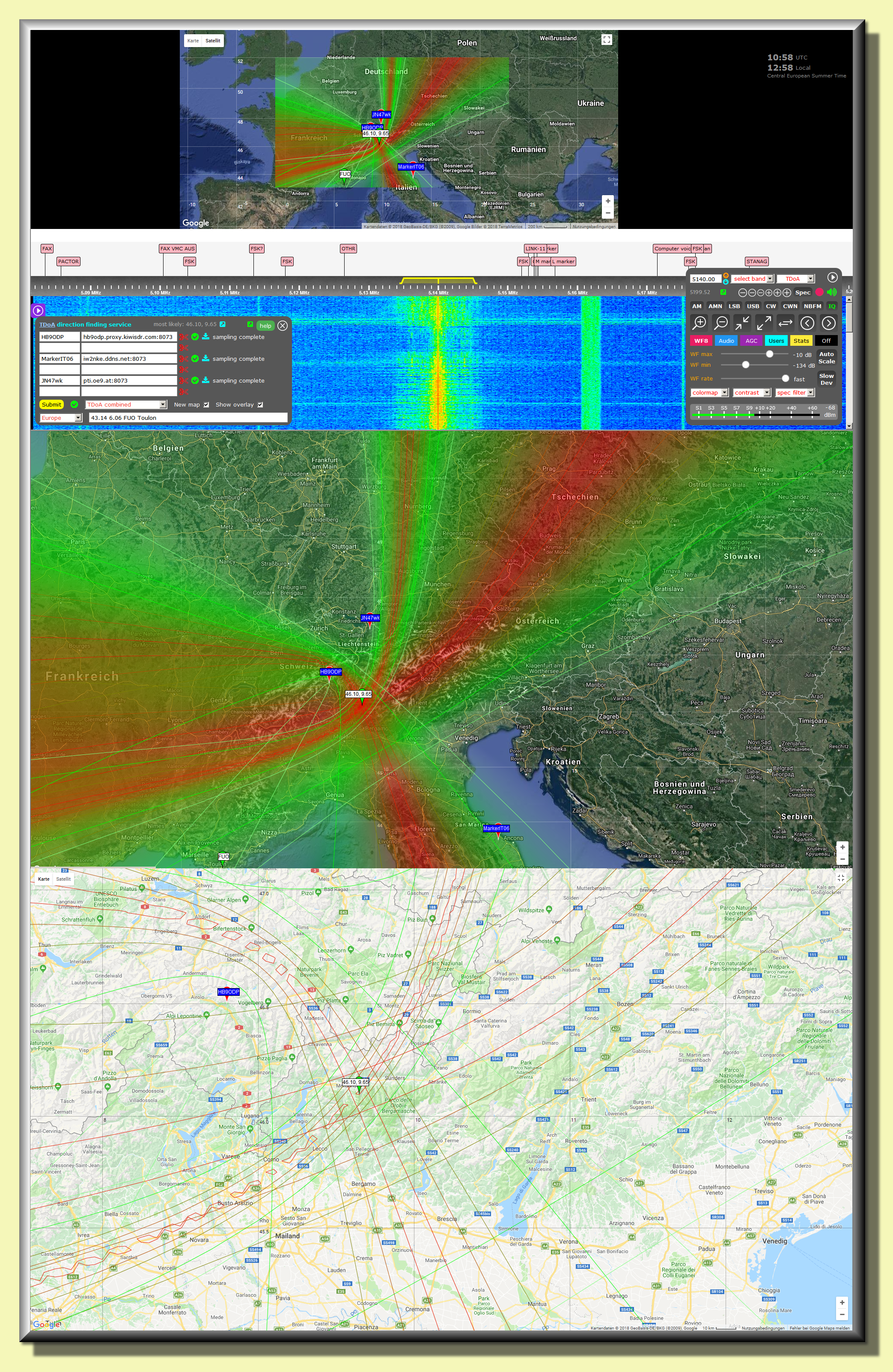http://www.rhci-online.net/radiogram/radiogram.htm
http://www.rhci-online.net/radiogram/radiogram.htm
|
RSID: <<2018-07-18T20:25Z MFSK-32 @ 6070000+1500>>
START IBC - ITALIAN BROADCASTING CORPORATION
mail: ibc@europe.com
|
|
|
|
|

RSID: <<2018-07-21T16:01Z
MFSK-32 @
9400000+1500>>
Welcome to program 57 of Shortwave Radiogram.
I'm Kim Andrew Elliott in Arlington, Virginia USA.
Here is the lineup for today's program, in MFSK modes as noted
...
1:29 MFSK32: Program preview (now)
2:46 RFE/RL to launch news services in Romania, Bulgaria*
7:45 MFSK64: Trump suggests Montenegrins could start WWIII*
11:48 Astronomers have found 12 new moons around Jupiter*
16:33 Scotland chosen for new UK spaceport*
21:21 Images of the week*
29:34 MFSK32: Closing announcements
* with image
Please send reception reports to radiogram@verizon.net
And visit http://swradiogram.net
Twitter:
@SWRadiogram
From Radio Free Europe/Radio Liberty:
RFE/RL To Launch News Services In Romania, Bulgaria
Eugen Tomiuc
19 July 2018
Radio Free Europe/Radio Liberty (RFE/RL) has announced plans to
return to Romania and Bulgaria amid growing concern about a
reversal in democratic gains and attacks on the rule of law and
the judiciary in the two EU and NATO members.
The U.S. Congress-funded station will launch news services in the
two Southeastern European countries starting in December.
RFE/RL President Thomas Kent said in a July 18 press release that
he hoped the move would "help the growth of a free press, promote
democratic values and institutions, and inform discussion in both
countries of their place in NATO, the EU, and other Western
organizations."
The RFE/RL press release also said that "government officials,
civil society representatives, and journalists in both countries
have expressed concern that disinformation, corruption, and
social division are undermining their political systems."
Romania and Bulgaria, who joined the European Union in 2007, have
been constantly rated among the most corrupt members of the bloc.
The recent dismissal of Romania's chief anticorruption prosecutor
by the Constitutional Court, after years of investigations that
resulted in multiple convictions of current and former officials,
has sparked outrage among Romanians, who took to the streets in
Bucharest and many other cities.
"Beginning in December 2018, RFE/RL will provide multimedia
reporting and analysis in Bulgarian and Romanian and partner with
local media to amplify existing projects that promote public
accountability and debunk false news," the press release said.
RFE/RL's Bulgarian Service ended in 2004 while its Romanian
counterpart ended in 2008.
During the Cold War, many Romanians and Bulgarians listened to
RFE/RL. Listening to RFE/RL was considered a criminal offense in
many communist countries.
https://www.rferl.org/a/rfe-rl-to-launch-news-services-in-romania-bulgaria/29376248.html
See also:
https://pressroom.rferl.org/a/rferl-expands-to-romania-bulgaria/29374397.html
Image: RFE Romanian logo ...
Sending Pic:224x104C;

Shortwave Radiogram now changes to MFSK64 ...
RSID: <<2018-07-21T16:07Z
MFSK-64 @
9400000+1500>>
This is Shortwave Radiogram in MFSK64
Please send reception reports to
radiogram@verizon.net
From Radio Free Europe/Radio Liberty:
Trump Says Montenegrins 'Very Aggressive,' Suggests They Could
Start WWIII
18 July 2018
U.S. President Donald Trump has said that Montenegrins are "very
strong, very aggressive" people and suggested he fears NATO's
newest member could drag the alliance into a major war.
In an interview with Fox News TV recorded in Helsinki and aired
on July 17 in the United States, Trump was asked about NATO's
Article 5, which says that an attack on one alliance member is an
attack on all members.
When asked by the interviewer, "Why should my son go to
Montenegro to defend it from attack?" Trump replied, "I
understand what you're saying. I've asked the same question."
He said that Montenegro is "a tiny country with very strong
people, by the way. They're very strong people, they're very
aggressive people. They may get aggressive and, congratulations,
you're in World War III."
Trump then acknowledged that under Article 5, which enshrines the
principal of collective defense, NATO would have to defend
Montenegro if it is attacked because "that's the way it was set
up."
The Montenegrin Embassy in Washington told RFE/RL that it could
not immediately respond to Trump's remarks.
Trump caused a stir when he shoved Montenegrin Prime Minister
Dusko Markovic aside as he pushed to get into a group photo at a
NATO summit in May 2017.
Markovic reacted mildly, saying later that the push "didn't
really register."
In his comments to Fox News, Trump went on to stress that every
alliance member must meet its financial commitments, saying, "You
have to pay, you have to pay."
At a NATO summit last week in Brussels, Trump urged alliance
members to speed up increases in their defense spending.
NATO allies in 2014 vowed to seek to meet a target of spending 2
percent of GDP on defense by the end of 2024.
Montenegro became NATO's 29th member in June 2017, marking a
historic geopolitical turn toward the transatlantic alliance amid
opposition from Russia.
Moscow has long opposed any further NATO enlargement and has
bitterly criticized Podgorica's accession to the alliance.
https://www.rferl.org/a/trump-says-montenegrins-very-aggressive-suggests-they-could-start-world-war-iii/29373727.html
Sending Pic:224x172C;
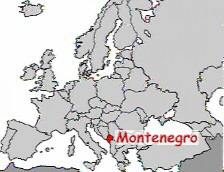
This is Shortwave Radiogram
Please send reception reports to
radiogram@verizon.net
From Science News:
Jupiter has 12 more moons than we knew about - and one is bizarre
Lisa Grossman
17 July 2018
Astronomers have found 12 more moons around Jupiter, and one is
really weird. While 11 orbit in the same direction as their
nearest neighbors, one doesn't, potentially putting it on a fatal
collision course.
"It's driving down the highway on the wrong side of the road,"
says planetary scientist Scott Sheppard of the Carnegie
Institution for Science in Washington, D.C.
Sheppard and colleagues found the moons while looking for
something else entirely: a putative planet that could exist
beyond the orbit of Neptune, known colloquially as Planet Nine.
During a survey in 2017 of the most distant objects in the solar
system using the Victor Blanco 4-meter telescope in Chile,
Jupiter happened to be visible in the same area of sky that the
team was searching during one of its observing runs. "Might as
well kill two birds with one stone," Sheppard thought.
The researchers found a dozen objects moving around the sun at
the same rate as Jupiter. Follow-up observations confirmed the
moons' existence and orbits: two inner moons that orbit in the
same direction that Jupiter spins, nine outer moons that orbit
the planet in the opposite direction and one oddball traveler.
The researchers announced two of the moons in 2017 and the
remaining 10 on July 16.
The motions of all but the oddball are normal for Jovian moons,
which now number a whopping 79. Scientists think that's because
the inner moons formed from a disk of gas and dust that orbited
the giant planet in the solar system's early days, similar to how
the planets formed around the sun. The outer moons were probably
free-floating space rocks captured when they came too close, and
their opposite orbit was set by the direction that they
approached Jupiter from.
But one moon broke the mold. This rock, which the team calls
Valetudo for the Roman goddess of health and hygiene, is tiny,
only about a kilometer across. It orbits in the same direction as
Jupiter's spin, but alongside the farther-out retrograde moons.
As a result, Valetudo is probably doomed to collide with one or
more of the other moons someday. The researchers are still
calculating when, but they expect it to occur sometime between
100 million and a billion years from now.
Valetudo may be the last remnant of a bigger object that has
already withstood several collisions, or of a family of moons
that has since been smashed to smithereens. "It's probably the
largest surviving member, if not the only one," Sheppard says.
Such nonconformist satellites are not rare, notes planetary
scientist David Jewitt of UCLA, who was not involved in the new
work. "But they are very interesting, because we know that they
have been captured by their host planets, but we don't know how,
or from where," he says. Figuring out what oddballs like Valetudo
are made of could help nail those details down.
https://www.sciencenews.org/article/jupiter-has-12-more-moons-and-one-is-bizarre
See also:
https://newatlas.com/12-new-moons-jupiter/55502/
https://www.sciencealert.com/12-new-moons-discovered-orbiting-jupiter-valetudo-collision-sheppard-et-al
Image: Orbits of Jupiter's moon's, including Valetudo (green) ...
Sending Pic:203x197C;
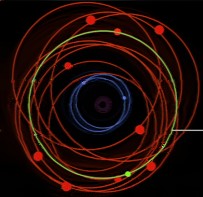
This is Shortwave Radiogram
Please send reception reports to
radiogram@verizon.net
From New Atlas:
Scotland chosen for new UK spaceport
David Szondy
16 July 2018
After almost half a century, Britain is getting back into the
space rocket business. The UK Space Agency has announced that
Melness in Sutherland on the north coast of Scotland has been
chosen for the country's first vertical launch spaceport.
Business Secretary Greg Clark has granted initial funding of £2.5
million (US$3.3 million) to Highlands and Islands Enterprise to
develop the site, which will be used to launch small satellites
into orbit.
It's easy to forget that in the days of the Space Race, Britain
was one of the leading contenders behind the United States and
the Soviet Union, and in 1971 launched the British-built Prospero
X-3 satellite atop the British Black Arrow rocket from Woomera,
Australia. However, changing priorities due to the failing
economy and the run up to joining what is now the European Union
caused the government to abandon civilian rockets in 1972 to
focus on satellite construction.
Now the government is looking at a potential market of £3.8
billion ($5.4 million) over the next 10 years, and has its sights
on 10 percent of the global space market by 2030. To attain this,
the UK Space Agency is keen to develop spaceports across Britain
that include both horizontal launch sites using airplane-mounted
boosters taking off from conventional air strips, and vertical
launchers like in Sutherland. Today's grant is part of the
overall £50 million ($66 million) UK Spaceflight Programme.
Scotland is the best spot for a spaceport due to its sparse
population, clear flight paths over water, and clearances for
both polar and equatorial orbits. In addition, the north coast
has been used as a firing range for military and high altitude
sounding rockets for decades, so the area is very much a known
quantity.
But Sutherland is more than just a proposal and a check. Lockheed
Martin in partnership with British company Orbex will provide the
launch vehicle, called Prime, which is being developed under a
separate £5.5 million ($7.3 million) award. There's also an
additional £23.5 million ($31 million) going to Lockheed to
develop the launch facilities and a new satellite deployment
system called the Launch Orbital Manoeuvring Vehicle (SL-OMV)
that is capable of handling six CubeSats headed for six separate
orbits.
Other partners in the project include Moog, Orbital Micro
Systems, the University of Leicester, Surrey Satellite
Technology, Satellite Applications Catapult, SCISYS, Lena Space,
Reaction Engines, and Netherlands Space Office.
Orbex is a partner in the Sutherland project
The Sutherland spaceport is expected to be operational by early
in the next decade when a British-built pathfinder test vehicle
will validate the SL-OMV and ground system. This will be followed
by the launch of a constellation of CubeSats that will deliver
low latency weather observation to commercial and government
customers.
"As a nation of innovators and entrepreneurs, we want Britain to
be the first place in mainland Europe to launch satellites as
part of our Industrial Strategy," says Clark. "The UK's thriving
space industry, research community and aerospace supply chain put
the UK in a leading position to develop both vertical and
horizontal launch sites. This will build on our global reputation
for manufacturing small satellites and help the whole country
capitalize on the huge potential of the commercial space age."
https://newatlas.com/scotland-uk-spaceport/55467/
See also:
https://newatlas.com/virgin-orbit-cornwall-uk/55481/
Image: Artist's rendering of a launch from Melness ...
Sending Pic:227x150C;
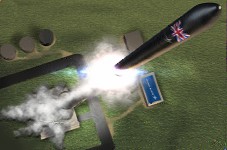
This is Shortwave Radiogram
Please send reception reports to
radiogram@verizon.net
THIS WEEK'S IMAGES
Aurora over eastern Manitoba. From
bit.ly/2uCGD6h ...
Sending Pic:162x224C;
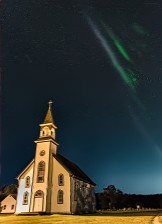
The Anak Krakatau (Child of Krakatoa) volcano as seen from Rakata
island in South Lampung, Indonesia. From
bit.ly/2Luy5Vv ...
Sending Pic:222x181C;
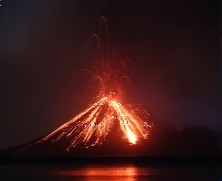
Our painting of the week is "Evening Poppies" by Jane Small. From
bit.ly/2L7mkYV
Sending Pic:229x168C;

Shortwave Radiogram now returns to MFSK32 ...
RSID: <<2018-07-21T16:28Z
MFSK-32 @
9400000+1500>>
This is Shortwave Radiogram in MFSK32 ...
Transmission of Shortwave Radiogram is provided by:
WRMI, Radio Miami International, http://wrmi.net
and
Space Line, Bulgaria, http://spaceline.bg
Please send reception reports to
radiogram@verizon.net
And visit http://swradiogram.net
Twitter:
@SWRadiogram
I'm Kim Elliott. Please join us for the next Shortwave
Radiogram.
|
Ending song: https://www.midomi.com/index.php?action=main.track&track_id=100140879210084677&from=voice_search Branko Krsmanovic Group - Bunjevacke igre (Bunjevka Dance) |
2018-07-20 2030-2100z 7780 kHz WRMI via US WEB-SDR
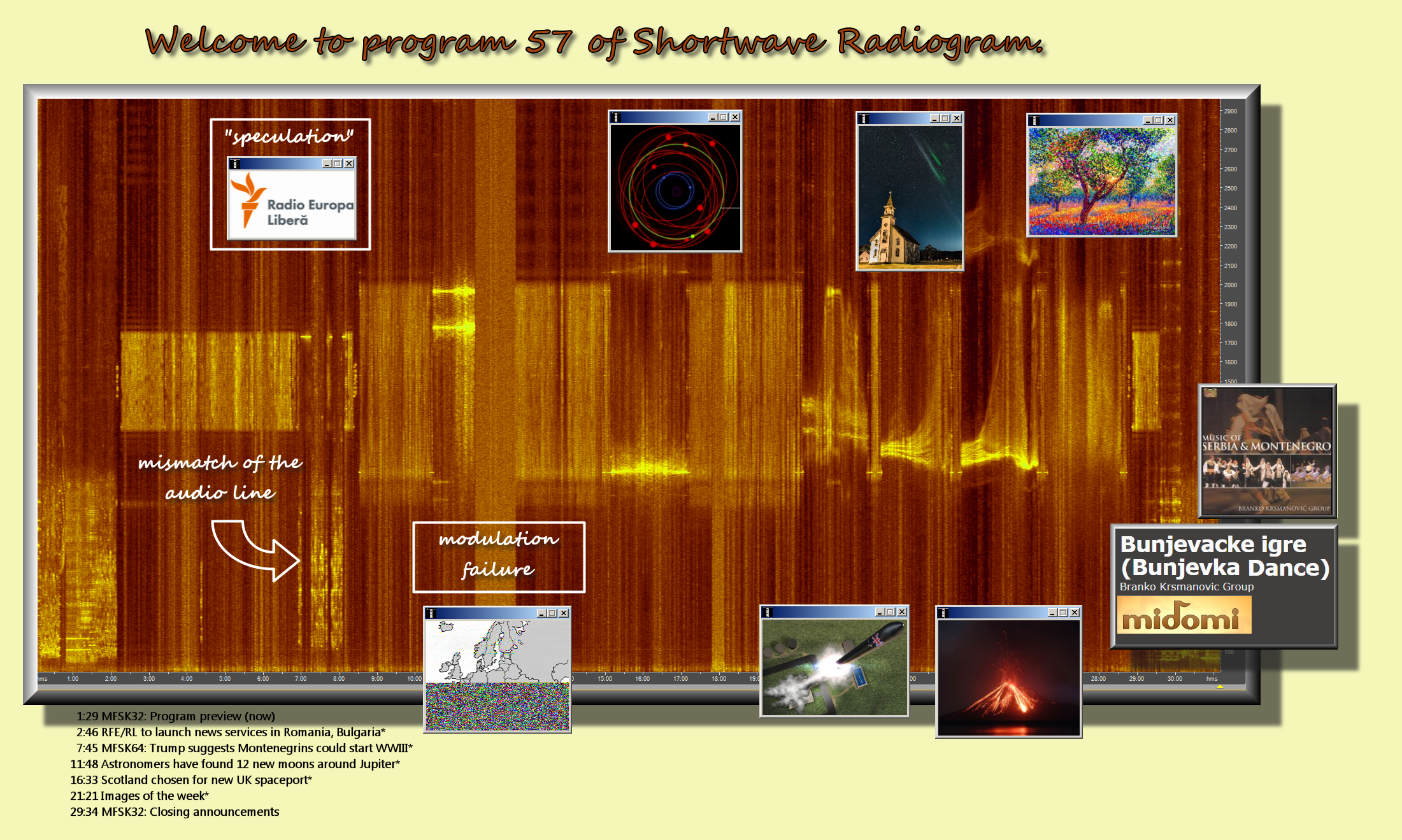
http://www.rhci-online.net/radiogram/radiogram.htm
|
QTH: |
D-06193 Petersberg (Germany/Germania) |
|
|
Ant.: |
Dipol for 40m-Band & Boomerang Antenna 11m-Band |
|
|
RX for RF: |
FRG-100B + IF-mixer & ICOM IC-R75 + IF-mixer |
|
|
Software IF: |
con STUDIO1 - Software italiano per SDR [S-AM-USB/LSB] + HDSDR 2.76 stable [2017-02-02] - for scheduled IF-recording |
|
|
Software AF: |
Fldigi-4.00.12 + flmsg-4.0.3 images-fldigifiles on homedrive.lnk |
|
|
OS: |
German XP-SP3 with support for asian languages |
German W7 32bit + 64bit |
|
PC: |
MEDION Titanium 8008 (since 2003) [ P4 - 2,6 GHz] |
MSI-CR70-2MP345W7 (since2014) [i5 -P3560 ( 2 x 2,6GHz) ] |

|
|
RSID: <<2018-07-25T18:48Z
MFSK-32 @
6070000+1500>>
Data transmission (also data communication or digital communications) is the
transfer of data (a digital bitstream or a digitized analog signal) over a
point-to-point or point-to-multipoint communication channel. Examples of such
channels are copper wires, optical
fibers, wireless communication channels, storage media and computer buses. The
data are represented as an electromagnetic signal, such as an electrical
voltage, radiowave, microwave, or infrared signal. (source: Wikipedia.org)
de PA0ETE k
RSID: <<2018-07-25T18:49Z MFSK-64 @ 6070000+1500>>
Analog or analogue transmission is a transmission method of conveying voice,
data, image, signal or video information using a continuous signal which varies
in amplitude, phase, or some other property in proportion to that of a variable.
The messages are either
represented by a sequence of pulses by means of a line code (baseband
transmission), or by a limited set of continuously varying wave forms (passband
transmission), using a digital modulation method. The passband modulation and
corresponding demodulation (also known
as detection) is carried out by modem equipment. According to the most common
definition of digital signal, both baseband and passband signals representing
bit-streams are considered as digital transmission, while an alternative
definition only considers the baseband
signal as digital, and passband transmission of digital data as a form of
digital-to-analog conversion.
Data transmitted may be digital messages originating from a data source, for
example a computer or a keyboard. It may also be an analog signal such as a
phone call or a video signal, digitized into a bit-stream, for example, using
pulse-code modulation (PCM) or more
advanced source coding (analog-to-digital conversion and data compression)
schemes. This source coding and decoding is carried out by codec equipment.
Courses and textbooks in the field of data transmission as well as digital
transmission and digital communications have similar content.
Digital transmission or data transmission traditionally belongs to
telecommunications and electrical engineering. Basic principles of data
transmission may also be covered within the computer science/computer
engineering topic of data communications, which also
includes computer networking or computer communication applications and
networking protocols, for example routing, switching and inter-process
communication. Although the Transmission control protocol (TCP) involves the
term "transmission", TCP and other transport
layer protocols are typically not discussed in a textbook or course about data
transmission, but in computer networking.
The term tele transmission involves the analog as well as digital communication.
In most textbooks, the term analog transmission only refers to the transmission
of an analog message signal (without digitization) by means of an analog signal,
either as a non-modulated
baseband signal, or as a passband signal using an analog modulation method such
as AM or FM. It may also include analog-over-analog pulse modulatated baseband
signals such as pulse-width modulation. In a few books within the computer
networking tradition, "analog
transmission" also refers to passband transmission of bit-streams using digital
modulation methods such as FSK, PSK and ASK. Note that these methods are covered
in textbooks named digital transmission or data transmission, for example.
The theoretical aspects of data transmission are covered by information theory
and coding theory.
Serial and parallel transmission
In telecommunications, serial transmission is the sequential transmission of
signal elements of a group representing a character or other entity of data.
Digital serial transmissions are bits sent over a single wire, frequency or
optical path sequentially. Because it
requires less signal processing and less chances for error than parallel
transmission, the transfer rate of each individual path may be faster. This can
be used over longer distances as a check digit or parity bit can be sent along
it easily.
In telecommunications, parallel transmission is the simultaneous transmission of
the signal elements of a character or other entity of data. In digital
communications, parallel transmission is the simultaneous transmission of
related signal elements over two or more
separate paths. Multiple electrical wires are used which can transmit multiple
bits simultaneously, which allows for higher data transfer rates than can be
achieved with serial transmission. This method is used internally within the
computer, for example the internal
buses, and sometimes externally for such things as printers, The major issue
with this is "skewing" because the wires in parallel data transmission have
slightly different properties (not intentionally) so some bits may arrive before
others, which may corrupt the
message. A parity bit can help to reduce this. However, electrical wire parallel
data transmission is therefore less reliable for long distances because corrupt
transmissions are far more likely.
(source: Wikipedia)
de PA0ETE k
RSID: <<2018-07-25T18:52Z MFSK-128 @ 6070000+1500>>
The fight for free radio
The political activation of offshore radio's fanbase, 1964-1989
by Hans Knot
(source: www.soundscapes.info, text is
not complete)
In the 1960s and 1970s, people went out on the streets of the big cities to
demonstrate for a lot of causes. There were protest marches against the war in
Vietnam, against the use of nuclear energy, against racism and for better
education — all very serious matters.
Sometimes, however, people amassed on the streets out of more frivolous reasons,
for instance because their music was in danger. So, in these years, a real host
of radio lovers participated in the marches to protest against the abolition of
offshore radio. In 1967,
the "Free Radio Association" organized a march from Trafalgar Square to Fleet
Street. In 1970, the British offshore stations even were campaigning for the
Tories to prevent the jamming of Radio Caroline and Radio Northsea
International. The success of the Tories,
however, did not change anything in the attitude of the British government
towards offshore radio. Neither did the Dutch government reverse its decision to
end the transmissions of the offshore stations, despite the huge demonstration
of 1973 in The Hague in favour
of Radio Veronica. On September 1st, 1974, a new law became effective that
signalled the end for the Dutch offshore radio stations. Looking back at the
demonstrations and all the organisations behind them, Hans Knot invites you to
raise the banners again and to
accompany him on this walk through memory lane.
1 Right: On April 18th, 1973, over 150,000 people were marching for Radio
Veronica to the Dutch Parliament Building at the Binnenhof, The Hague
Thirty years ago ... Quite a lot of people in the Netherlands still love the
style of radio and radio music that developed in the 1960s and 1970s. As a
consequence, for most of them April 18th is an important date to commemorate. On
that day, now thirty years ago,
over 150,000 people overflowed the city of The Hague for what — at the time —
was the biggest demonstration ever held in the country "behind the dykes." The
demonstration of 1973 was organised by people who loved the offshore radio
station Veronica, a notable
frontrunner in the new style of pop radio. The organisation committee had asked
the listeners to come out in the open to protest against the Dutch government
because of its plans to close down the beloved offshore radio station.
The Dutch were rather late to do so. Already on September 26th, 1965, the
European Council had signed the Strasbourg Treaty, or fully: the "European
Agreement for the Prevention of Broadcasts Transmitted from Stations outside
National Territories." In October 1967,
Denmark, Belgium and Sweden had ratified the agreement, followed by Great
Britain on December 3rd, 1967. Germany followed track on February 28th, 1970.
The Netherlands would do it on September 27th, 1974. But even before signing the
treaty, national legislation would
have to be passed to act effectively against the offshore radio stations. In
1973, that was about to happen in the Netherlands. To show that they did not
agree with such a decision, on April 18th, 1973, from all over the country
people gathered in the Dutch governmen
t capital. People even came from neighbouring countries like Great Britain,
Germany, Belgium and France. All the "anoraks," as the offshore radio fans were
called, assembled on the Malieveld — a large city park near the Central Station.
From there, together, they
walked through the city to the Dutch Parliament Building at the Binnenhof to
hand over a huge load of petitions and signatures to a representie
RSID: <<2018-07-25T18:54Z 20xPSK63R @ 6070000+1500>>
The Mebo II was originally the Dutch freighter, "Silvretta", built in 1948 by De
Groot en van Vliet, Slikkerveer. It had a weight of 630 tons and a length of 186
feet. In 1969, it was bought by Edwin Bollier and Erwin Meister, renamed and
converted into
an offshore radio station at the same shipyard where it had been built. It was
famous for its dramatic art nouveau color scheme.
From 1970–74, it broadcast as Radio Nordsee International (RNI) from
international waters four miles off Scheveningen, the Netherlands. Transmissions
were on AM medium wave (max105kW), shortwave (2x10kW) and FM (1 kW).
Following RNI's closure due to the Dutch Marine Offences Act, it was announced
that the ship would move to Italy to broadcast as that country's first offshore
radio station. However, this plan fell through, and in 1976 the ship sailed to
Libya where it operated for
some time in coastal waters relaying Libyan state radio. Later its broadcast
operations ceased, and it was sunk in 1981 when it was targeted for Libyan
rocket practice.
de PA0ETE k
RSID: <<2018-07-25T18:55Z
8PSK-250F @
6070000+1500>>
Laser Hot Hits went off the air in 1987, MV Communicator was again impounded.
This time it was stripped of studio equipment, although the transmitters and
generators were intact. The ship was
sold several times and impounded by the Portuguese Government in Lisbon. In
1994, when the ship was taken to the Netherlands. There she was refitted with a
new 50 kilowatt transmitter and mast and broadcast programmes of Holland FM from
a mooring on the IJsselmeer.
The following year Communicator was sold to the Veronica Broadcasting Society,
who used it to transmit a new national Dutch station - Veronica Hit Radio. When
that moved to FM they sold the ship on to Quality Radio. The ship was then sold
to Dave Miller's The
Superstation, and taken to the Orkney Isles where she broadcast a local station
on 105.4 MHz in 2004. The Superstation sold the ship for £1,000 following which
she was beached near St Margaret's Hope pier in Orkney and cut up for scrap.
The full story of the MV Communicator's 21-year career as a radio ship was told
in a new book at the end of 2016 called Radio Adventures of the MV Communicator,
published by World of Radio Ltd. The book features recollections and reminisces
as well as many photograph
s of the Communicator's crew of DJs, engineers and suppliers. A further book
published in 2017 is LASER RADIO PROGRAMMING which describes how the format was
devised, and how it was put into action - the hot clocks, the use of power words
that sell, and other radio
programming techniques.
de PA0ETE k
RSID: <<2018-07-25T18:56Z
8PSK-1200F @
6070000+1500>>
Laser Hot Hits went off the air in 1987, MV Communicator was again impounded.
This time it was stripped of studio equipment, although the
transmitters and generators were intact. The ship was sold several times and
impounded by the Portuguese Government in Lisbon. In 1994, when the ship was
taken to the Netherlands. There she was refitted with a new 50 kilowatt
transmitter and mast and broadcast
programmes of Holland FM from a mooring on the IJsselmeer. The following year
Communicator was sold to the Veronica Broadcasting Society, who used it to
transmit a new national Dutch station - Veronica Hit Radio. When that moved to
FM they sold the ship on to Quality
Radio. The ship was then sold to Dave Miller's The Superstation, and taken to
the Orkney Isles where she broadcast a local station on 105.4 MHz in 2004. The
Superstation sold the ship for £1,000 following which she was beached near St
Margaret's Hope pier in Orkney
and cut up for scrap.
The full story of the MV Communicator's 21-year career as a radio ship was told
in a new book at the end of 2016 called Radio Adventures of the MV Communicator,
published by World of Radio Ltd. The book features recollections and reminisces
as well as many photograph
s of the Communicator's crew of DJs, engineers and suppliers. A further book
published in 2017 is LASER RADIO PROGRAMMING which describes how the format was
devised, and how it was put into action - the hot clocks, the use of power words
that sell, and other radio
programming techniques.
de PA0ETE k
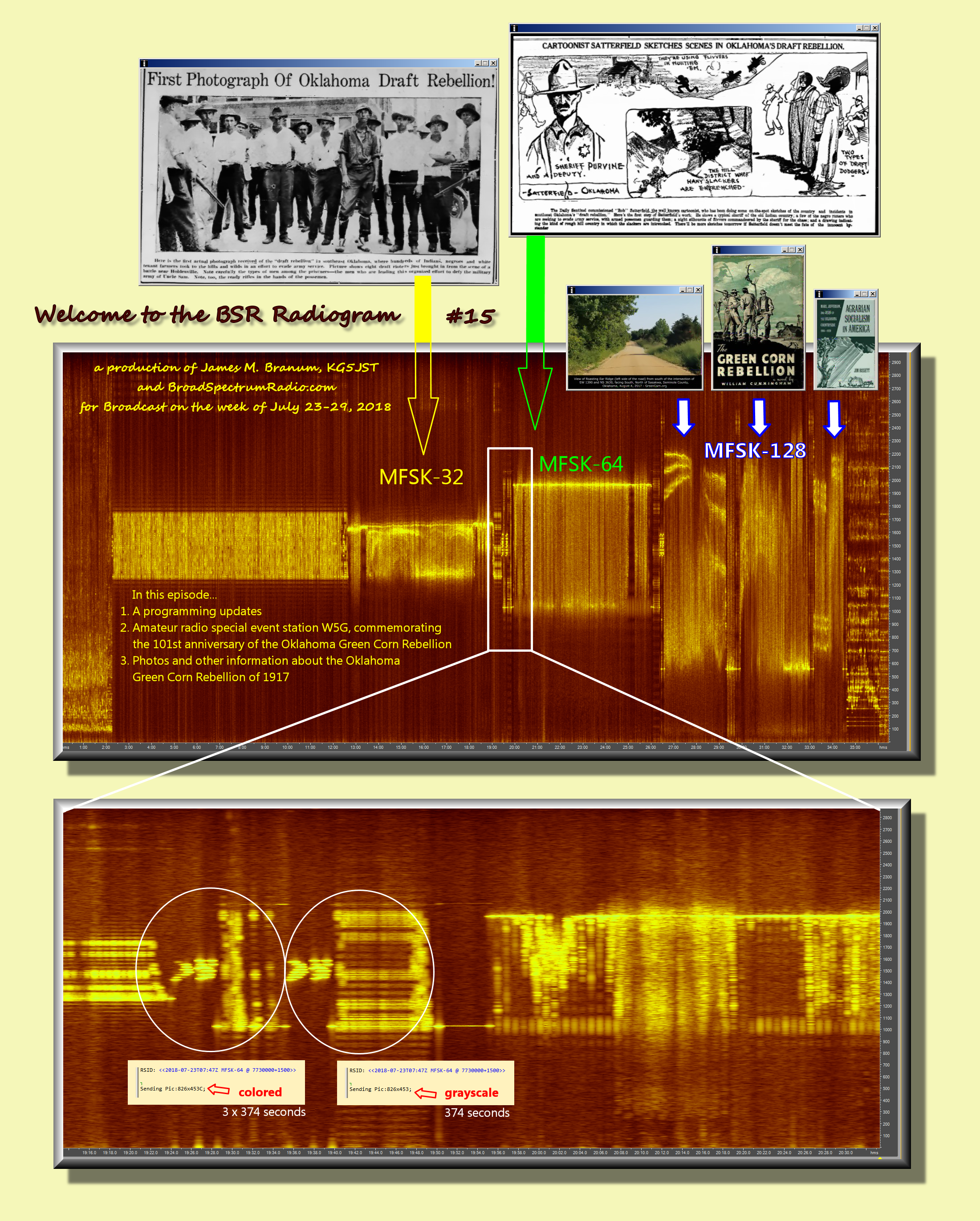
RSID: <<2018-07-23T07:30Z MFSK-32 @ 7730000+1500>>
Welcome to the BSR Radiogram
a production of James M. Branum, KG5JST and
BroadSpectrumRadio.com
for Broadcast on the week of July 23-29, 2018
Please send QSL reports to us at
broadspectrumradio@gmail.com or post them to the facebook group for our
friends at the facebook group
for the Shortwave Radiogram at:
https://www.facebook.com/groups/567099476753304/
In this episode...
1. A programming updates
2. Amateur radio special event station W5G, commemorating the 101st anniversary
of the Oklahoma Green Corn Rebellion
3. Photos and other information about the Oklahoma Green Corn Rebellion of 1917
1. Programming Update
A few things I should mention...
A. Our mailbag show is delayed for one more week. If you want to be mentioned on
this program, please send us your qsl report at
broadspectrumradio@gmail.com.
B. This program has several different modes, instead of our usual MFSK32 only.
C. We will continue on our regularly scheduled frequency and time on WRMI for
next week but after that we may be making some changes on
our programming schedule, due to both our finances and some issues. Ideally, we
are hoping to expand our schedule and broadcast coverage,
but it will hinge on how our fundraising goes. We will post details soon on our
website at broadspectrumradio.com
2. W5G, amateur radio special event station
In celebration of the 101st anniversary of the Oklahoma Green Corn Rebellion,
yours truly (KG5JST) will be opperating a ham radio special
event station under the call sign ofW5G. The station will operate from August
1-13, 2018, primarily on the FT-8 mode, but also on SSB on 10
and 20 meters and also locally on on the 2 meters and 70 cm bands. We will post
details of our operations on QRZ and on GreenCorn.org. A
special QSL card (either in electronic or postal formats) will be sent out.
3. The Oklahoma Green Corn Rebellion of 1917
This is adapted from the "about" page of the
GreenCorn.org website:
Almost 101 years ago, in early August 1917, between 800-1000 people (including
impoverished African-American, European-American and
Native Americans), gathered at the farm of Joe and John Spears in Sasakawa,
Oklahoma, to plan a march upon Washington to stop the draft
(conscription for military service) and end US involvement in what would later
be called World War I. But this march didn’t happen, as word had
already spread of the plans for this march to the authorities.
Local and state authorities moved quickly to stop this movement, but it wasn’t a
shooting war until shots were fired by some of the rebels at
the Seminole County sheriff and his deputy near the Little River (near Sasakawa)
on Thursday, August 2, 1917, and not longer after that,
telephone lines were cut and attempt was to blow up a key railroad bridge.
The truth of the details of what happened after this point is shrouded in
mystery and conflicting eye-witness statements, but what can be said
with some degree of accuracy is that local and state authorities, as well as
hundreds of members of armed possees, some coming from as far
away as Oklahoma City, converged and crushed the rebellion. Three people were
killed, and 450 were arrested. Of those arrested, 266 were
released with charges being filed. Of the remaining 184 participants who wre
charged, 150 were either convicted or pleaded guilty, receiving
jail and prison terms ranging from 60 days to 10 years. But most served far less
than the original sentences with the final five held at the
Federal prison in Leaveworth, Kansas in Feburary 1922.
The aftermath of the rebellion was a radical change in Oklahoma politics, which
included a severe crackdown on the Socialist Party of
Oklahoma and the Industrial Workers of the World (both of which had not been
involved in the Green Corn Rebellion). There was also a
crackdown on all forms of dissent against the draft and World War I, and a large
scale orientation of Oklahoma politics towards the right — a
major change in a state which had once had the strongest and most active
Socialist Party in the USA.
In the years since the Green Corn Rebellion, this story has been either laughed
at (as an example of the early naivete of Oklahomans) or
ignored. High School Oklahoma History classes have talked about the events of
this era, but often in a biased and/or cursory manner, and it
has largely been out of the public discourse.
This is why a loose committee of folks has decided to create this website. We
want to tell the story, but also go further and explore how others
have told the story through our history and encourage members of the public, but
especially fellow Okies, to reflect on this event and share
those reflections in whatever form seems best— essays, poems, songs, visual art,
academic papers, etc. We also hope to spark a series of
events across Oklahoma in which ordinary folks can discuss and remember what
happened.
One big task we have is to try to gather as much archival materials about the
GCR as possible, which will include newspaper clippings, etc.
Thankfully this material is in the public domain given its age, but we still
have to find it. So please check back often as we will be adding content
on a very regular basis.
Lots of views will be expressed and some of them will be ones that we (either
collectively or as individuals) might disagree with. We are ok with
disagreement and discussion and hope you as the reader can as well. But what are
not ok with is forgetting this historical moment when
oppressed people took action to protect their rights to not fight in a war they
didn’t believe in. This story needs to be told.
The following words stand out an explanation of why we insist on telling this
misunderstood and ignored story. The words are from an elderly
Seminole-Muscogee Creek woman whose uncle had been imprisoned after the
rebellion:
“The full moon of late July, early August it was, the Moon of the Green Corn. It
was not easy to persuade our poor white and black brothers and
sisters to rise up. We told them that rising up, standing up, whatever the
consequences, would inspire future generations. Our courage, our
bravery would be remembered and copied. That has been the Indian way for
centuries, since the invasions. Fight and tell the story so that
those who come after or their descendants will rise up once again. It may take a
thousand years, but that is how we continue and eventually
prevail.” – (as quoted by Roxanne Dunbar-Ortiz in “Growing up Okie – and
Radical” in Alternative Oklahoma: Contrarian Views of the Sooner
State (2007, ed. Davis D. Joyce)
We seek to honor the wish of this elder by telling the story in the hopes that
it will inspire creative thought and action. The struggles of the
future may or may not look like the struggles of the Green Corn Rebel of 1917,
but those who struggle in the future will benefit from learning
about the struggles of the past. And that is why we are committed to telling
this story and reflecting upon it.
RSID: <<2018-07-23T07:40Z
MFSK-32 @
7730000+1500>>
Sending Pic:800x483;
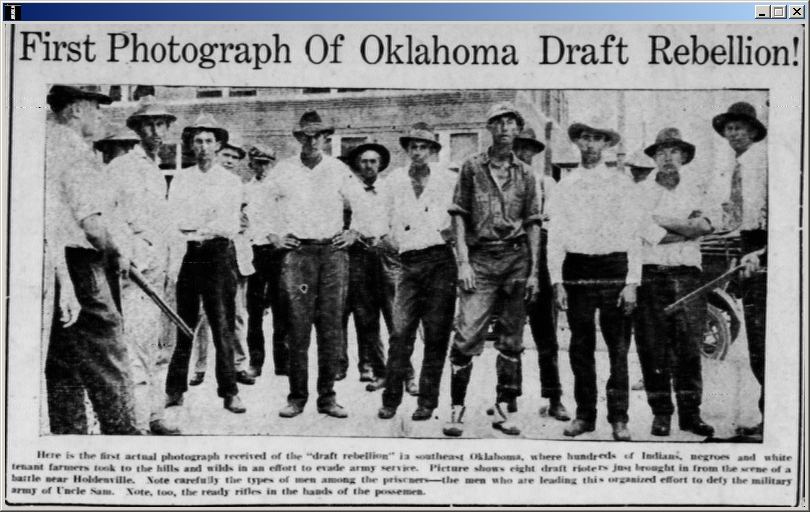
RSID: <<2018-07-23T07:47Z
MFSK-32 @
7730000+1500>>
Sending Pic:826x453C;
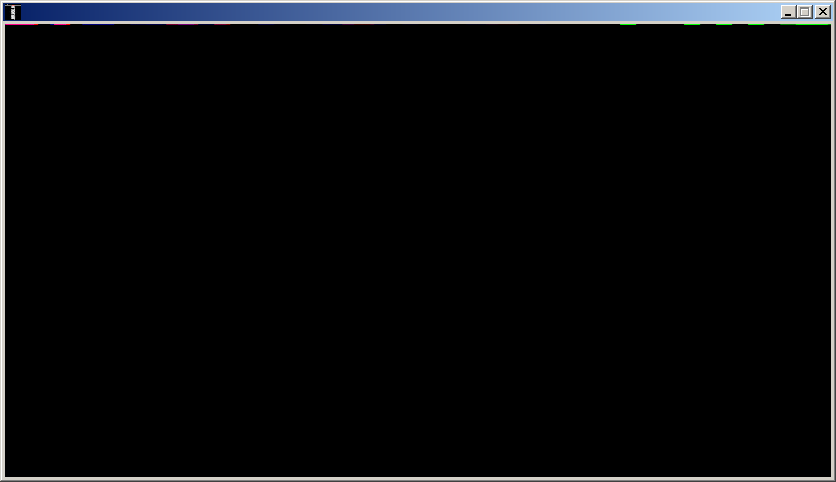
abort of the
transmission (3 x 826 x 453 px = 3 x
374178 ms = 3 x 374 s = 1122 s = 18 min 42s for 1 colored pic)
RSID: <<2018-07-23T07:47Z
MFSK-32 @
7730000+1500>>
Sending Pic:826x453;
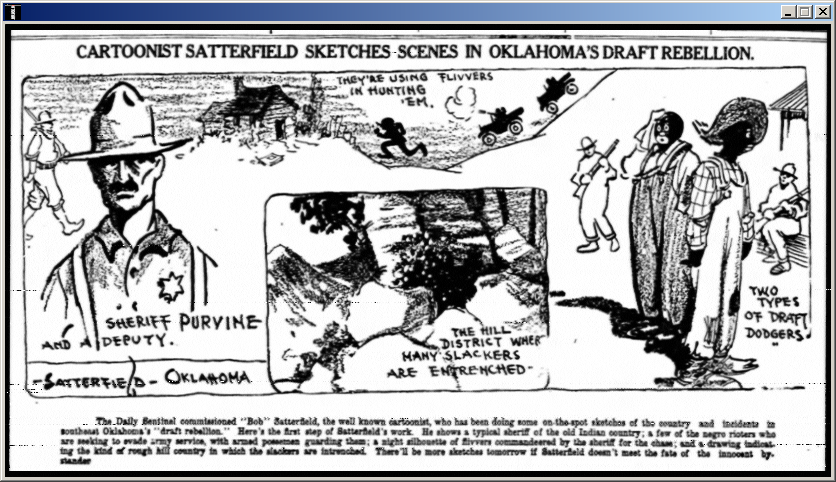
RSID: <<2018-07-23T07:54Z
MFSK-32 @
7730000+1500>>
RSID: <<2018-07-23T07:54Z
MFSK-128 @
7730000+1500>>
Sending Pic:300x210C;
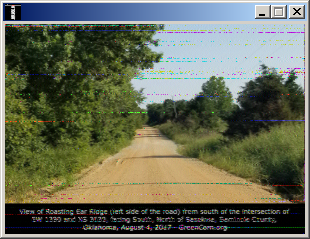
Sending Pic:203x300C;
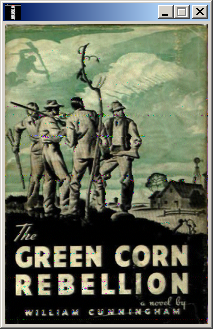
Sending Pic:130x200C;

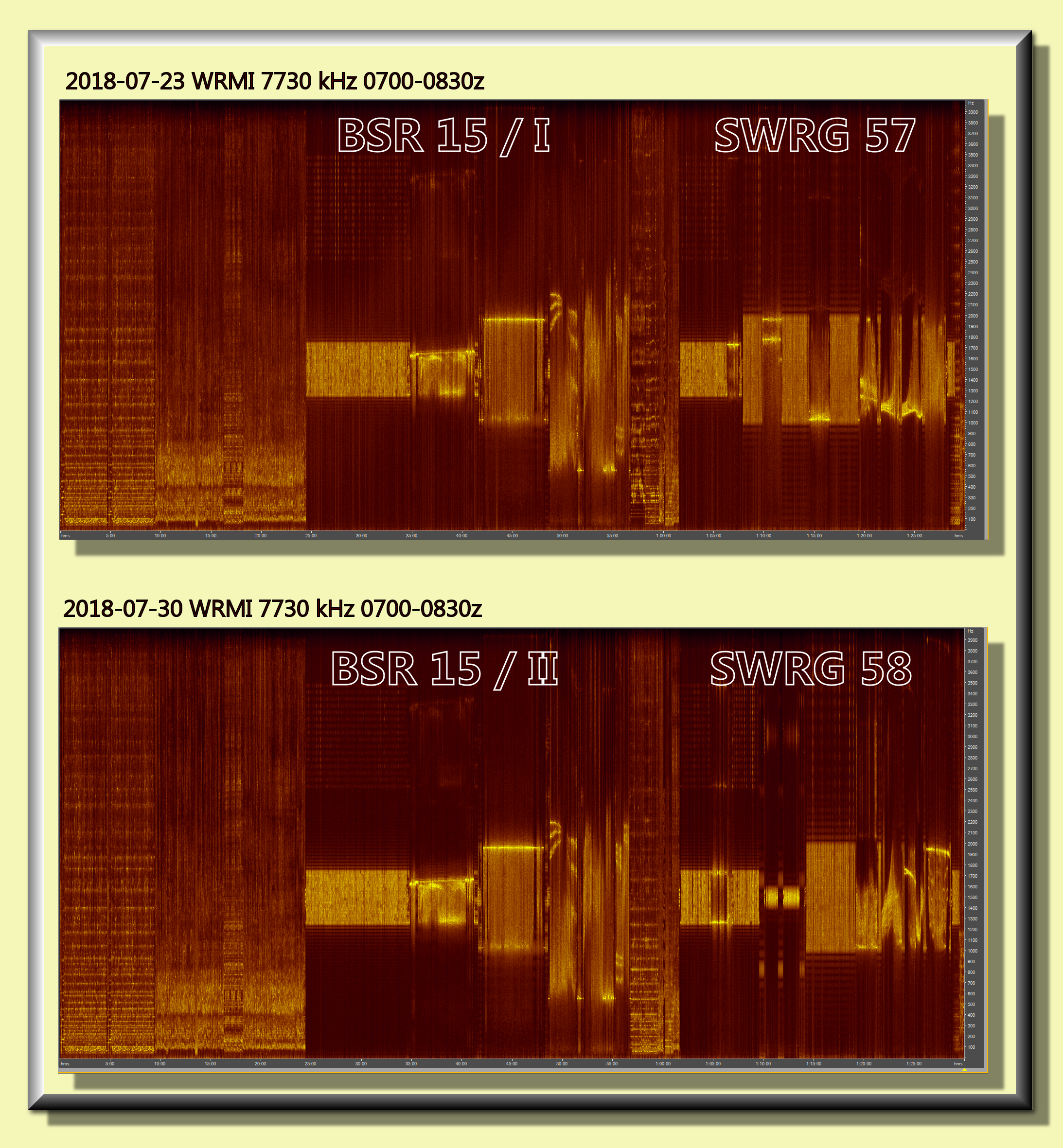
TDoA 5140 kHz CHARLESTON RADIO INTERNATIONAL https://www.facebook.com/CharlestonRadioInternational/
